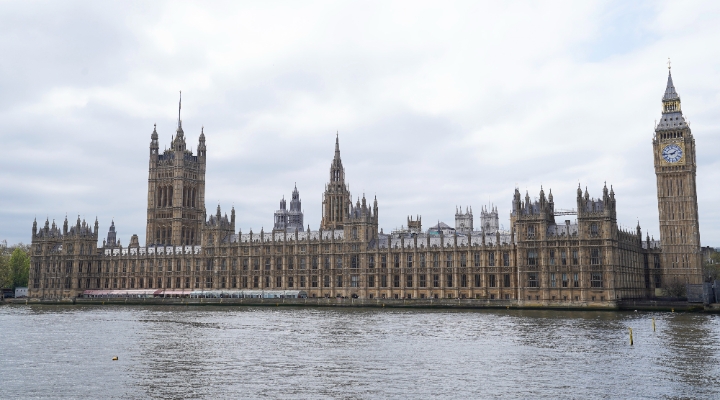
Investors had a lot to be thankful for in 2017, including strong stock market returns across the globe. But something else happened that was even more remarkable than a ninth straight year of stock market gains.
For the first time since the global financial crisis, all 45 countries tracked by the Organisation for Economic Co-operation and Development enjoyed GDP growth. That includes Brazil and Russia, which had, until recently, been in a recession.
Investors and financial experts have been waiting for this moment for years. While U.S. GDP growth has been in positive territory since 2009, just five years ago, the Eurozone was battling its own recession.
Now, though, it appears as if the world economy is firing on all cylinders. In November, the OECD said it expected the global economy to grow by 3.6% in 2017, up from 3.1% in 2016. This year should be another good one for global growth: The OECD expects the world's economy to expand by 3.7%, while all countries will continue experiencing GDP growth.
That's good news for investors. While economic growth doesn't always result in stock market growth, over the long term there is usually a positive correlation between them. Growing economies often make people feel better about their lots in life, which can lead to increased spending and higher stock prices.
"There's a greater confidence in this growth," says Michael Fredericks, head of income investing for the BlackRock Multi-Asset Strategies team.
This kind of environment presents different opportunities than buying after a recession or in times of middling growth. When the world is growing, like it is now, economically sensitive sectors and companies tend to experience the greatest gains. For instance, the S&P 500 Consumer Discretionary subsector was up 20% last year, while the Consumer Staples subsector, an industry that tends to well in less robust economic environments, rose just 10%.
Firing on All Cylinders
Synchronised global growth has been a long time coming. Since the recession, most developed nations have engaged in some sort of stimulus programme, such as quantitative easing, interest-rate cuts, or both. Borrowing rates around the world eventually dropped to such low levels that consumers and some corporations started spending again and, as a result, helped boost economic growth.
However, central banks didn't act all at the same time, the United States started its quantitative easing programme in 2009, while Japan began buying government bonds in 2011, so it took a while before all this easing worked its way through the global economy.
And it's not finished yet, says Fredericks. In Europe, for instance, consumers are taking a slow and steady approach to spending, and many companies haven't yet taken advantage of still ultralow rates, he says. Some countries, like Sweden, continue to have negative interest rates.
"There's still a lot of easy money out there," says Fredericks. "In some economies, there continues to be pent up demand. There hasn’t been a lot of investment or consumption, so we're a long way from the former highs in some economies, like Europe. There's a long way for them to grow and get back to where they were."
The US economy may be in the later stages of the cycle than its overseas peers, but even it should continue experiencing strong growth in 2018. Whatever one thinks of the recent tax cuts, a 21% corporate tax rate is certainly good for business, says Tim Parton, of JP Morgan.
"Small business confidence is off the charts and it had been so low for so long," he says. "Large companies are also starting to have confidence and may start thinking about spending more."
He thinks we could see more mergers in the States this year, while less regulation could be a boon for some sectors and help increase corporate spending.
Pay Attention to Cyclicals
Those who think global economic growth will continue will want to keep an eye on the more cyclical sectors, such as industrials, consumer discretionary, some technology operations and other parts of the market that are more sensitive to capital expenditures and business spending, says Parton.
Financials, which historically has been a defensive sector, is also highly sensitive to economic growth and interest rate movements; as a result, these stocks should do well as the economy expands and rates rise.
"Financials had been out of favour for a long period of time, but they're starting to do better and they have quite a lot of headroom," says Parton.
As much as continued economic expansion may benefit companies in these sectors, many stocks have already experienced big price gains. According to Morningstar, consumer cyclical stocks are about 9% overvalued as of this writing. Industrials are trading 17% above their fair value estimates, while the financial services sector is trading right around fair value.
Still, there are opportunities, especially for investors who may not be put off by rich valuations. Paul Gordon, comanager MFS Growth fund, looks for companies that can grow faster than their industries. and he's finding those companies in the industrials, financials, and consumer sectors, he says.
The key is to look for fundamentally sound companies that haven't yet soared or have had a pullback, says Fredericks. That's what he's doing in the technology sector, which he includes in the more cyclical part of his portfolio.
"We've been backing away from some of the highest-flying names in that sector and focusing more on stocks that haven't participated as much in terms of price appreciation," he says. "We still want double digit earnings growth, but with valuations that are roughly in line with the market."
Unless there's some major unforeseen setback in 2018, global economies will likely continue to forge ahead.
"The growth backdrop does look really supportive," says Fredericks. "And that's good for markets."
This article was written by Bryan Borzykowski, is a freelance columnist for Morningstar.com. The views expressed in this article do not necessarily reflect the views of Morningstar.




























